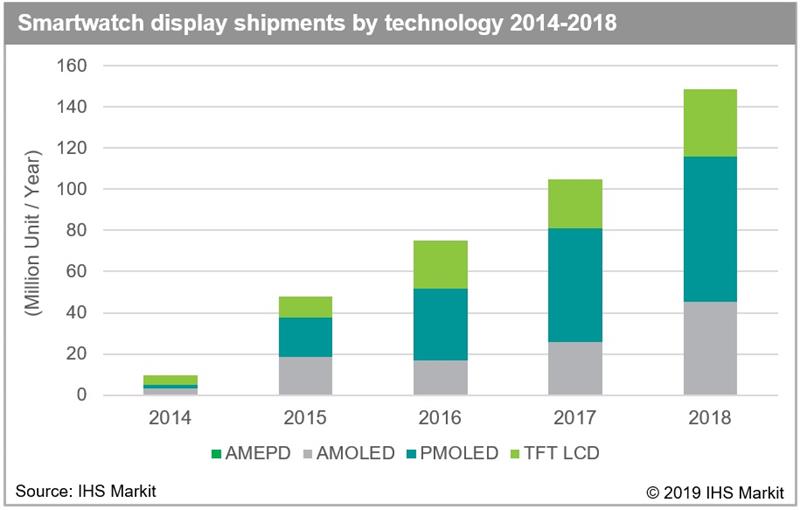Since the release of the Samsung Galaxy Gear in 2013 and the Apple Watch debuted in 2014, displays have increased sharply, growing more than 15 times over the past four years from 9.4 million units in 2014.
“When the first smartwatches were released, functions were limited to activity tracking and they acted as a second screen for smartphones,” said Hiroshi Hayase, senior director at IHS Markit. “Smartwatch functions have since become more diversified, including the ability to make and receive phone calls, use GPS for navigation and make mobile payments.”
The increasing demand for smartwatches has boosted the demand for the underlying display technologies used in their manufacture. In 2018, RitDisplay led the market for smartwatch displays, with a 22 per cent share in 2018. The company shipped 32.5m mono-color passive-matrix organic light emitting diode (PMOLED) panels, mainly to be used in low-priced strap-style smartwatches from Xiaomi and other Chinese brands. BOE followed RitDisplay with a 12 per cent share of the market, shipping 17.9m units of active-matrix OLED (AMOLED) and thin-film transistor liquid crystal display (TFT LCD) panels to mid-tier and high-end smartwatches from Huawei and other Chinese brands. The third largest player, LG Display, had shipments of 16.1m units of flexible AMOLED panels for the Apple Watch with an 11 per cent market share.

While the Galaxy Gear, the Apple Watch and other high-end smartwatches have adopted flexible AMOLED panels, simple and low-end strap-style smartwatches use mono-color PMOLED panels. Shipments of amorphous silicon (a-Si) and low temperature poly-silicon (LTPS) TFT LCD panels have also increased for mid-tier smartwatches since the production cost is lower than for AMOLED panels.
“Smartwatch display shipments amounted to just one tenth of total smartphone shipments in 2018,” Hayase said. “This suggests smartwatch display shipments have room to grow over the next couple of years, particularly as smartwatches now better synchronise with multiple smartphone functions.”













